On paper, the Specialized S-Works Stumpjumper looks quite outdated. The geometry is rather compact, the suspension is linear and yet this bike remains an excellent choice for the majority of riders. How come?
Click here for an overview of the best trail bike in test.
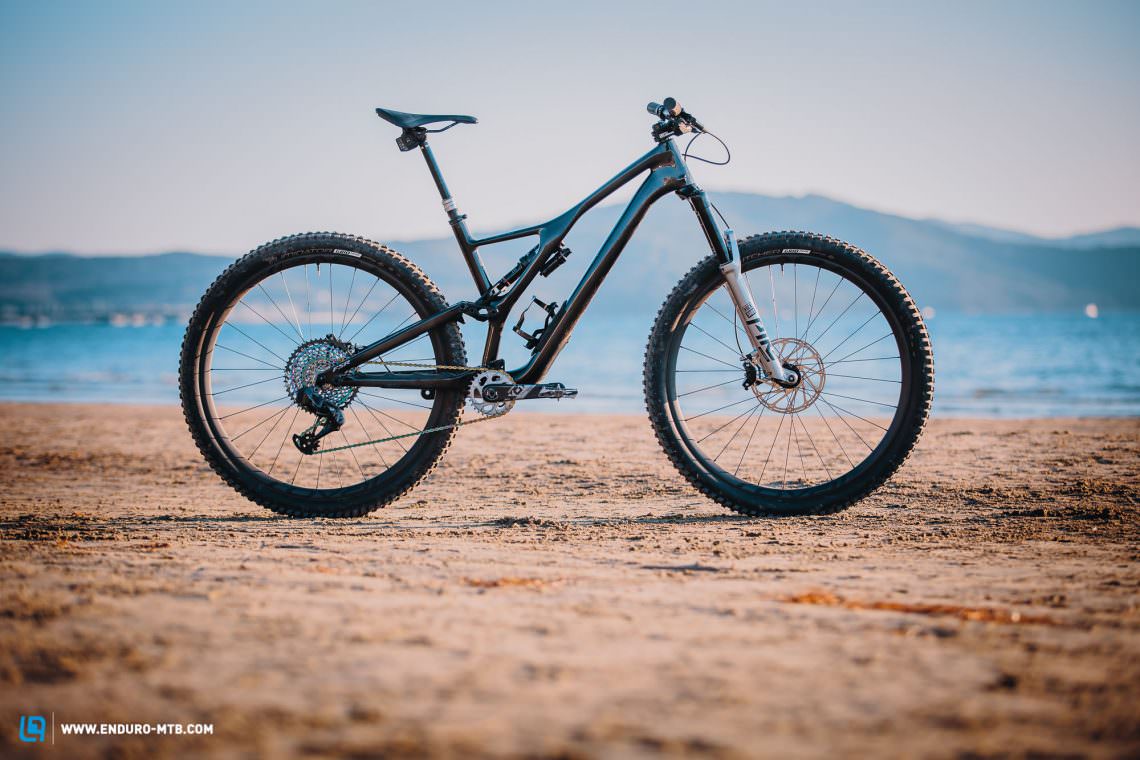
Any rider who has ever enjoyed the convenience of Specialized’s SWAT system won’t ever want a bike without it. Specialized’s current Stumpjumper also features the practical storage space in the down tube and a mini tool stowed in the head tube. But that isn’t the only special feature of the carbon frame. An additional side arm connects the top tube with the seat tube to optimise stiffness on the carbon frame. But this attention to detail is also reflected in the price. At € 10,699, the Stumpjumper is the most expensive bike on test. As you might expect, that also means top-notch componentry throughout. The 150 mm RockShox PIKE Ultimate RC2 fork is just as impressive as the powerful SRAM CODE RSC brakes with 200 mm rotors front and rear. Lightweight Roval Traverse SL wheels cut the weight to a slender 13.32 kg on the scales. The 170 mm RockShox Reverb AXS dropper post guarantees maximum freedom of movement on the bike. There is nothing to complain about on the cockpit either, though we would recommend removing the spacers under the stem to compensate for the long head tube and the rise of the bars.
Specialized S-Works Stumpjumper SRAM AXS 29
€ 10,699
Specifications
Fork RockShox Pike Ultimate RC2
Rear Shock RockShox Super Deluxe Ultimate
Seatpost RockShox Reverb AXS 170 mm
Brakes SRAM Code RSC 200/200 mm
Drivetrain SRAM XX1 Eagle AXS 30/10-50
Stem Deity Copperhead 50
Handlebar Specialized Trail FACT Carbon 780 mm
Wheelset Roval Traverse SL
Tires Specialized Butcher/Eliminator GRID Trail GRID 2,6/2,3
Technical Data
Size S M L XL
Weight 13,32 kg
Wheelsize 29"
Travel (f/r) 150/140 mm
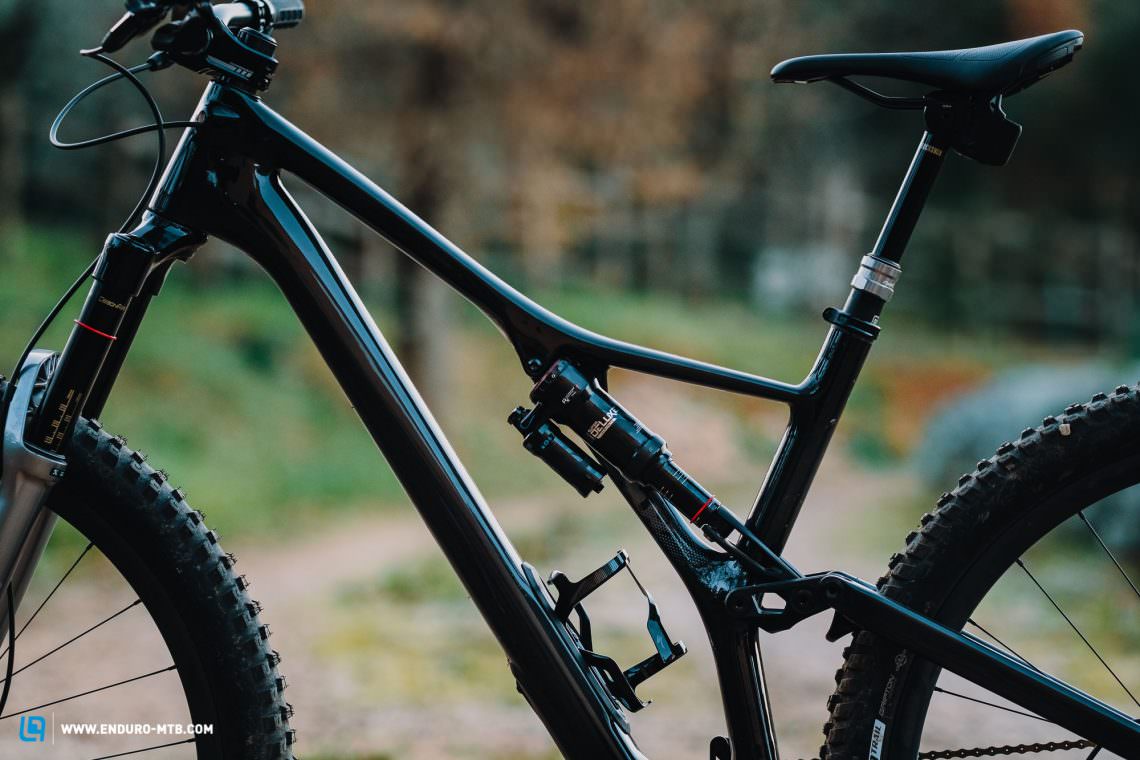
Because of the slack seat tube angle, we recommend pushing the saddle all the way forwards.
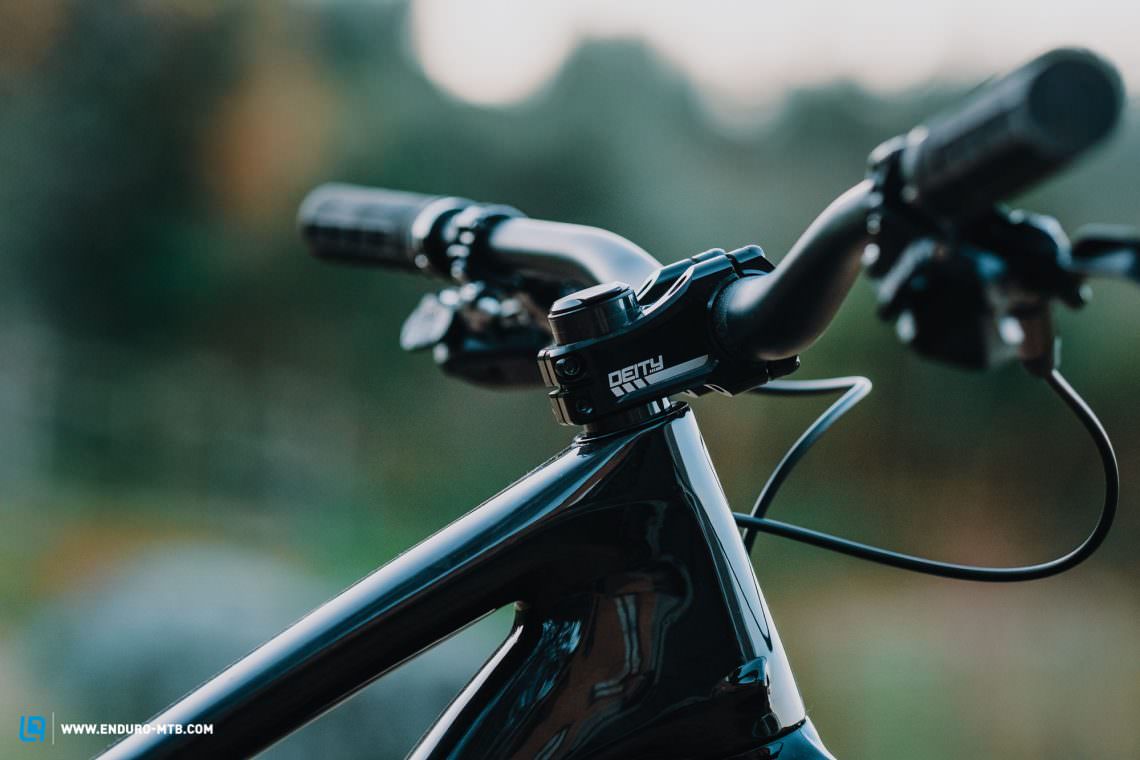
Coupled with the low bottom bracket and high rise handlebar, the front end is rather tall and we recommend removing the spacers under the stem for a more balanced ride.

Specialized’s SWAT system is still a unique selling point and for a lot of customers it’s likely a key reason for buying
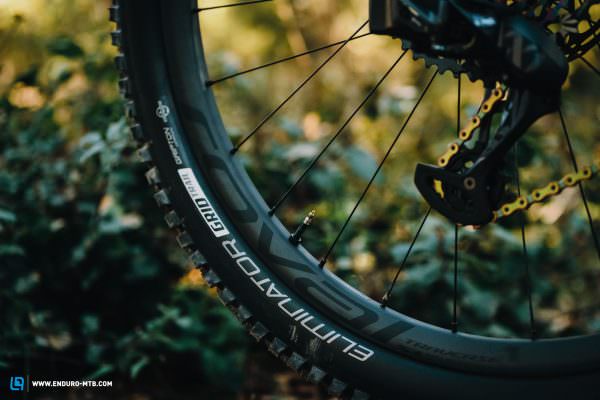
The Roval Traverse SL wheels are nice and light, making the climbs that much easier
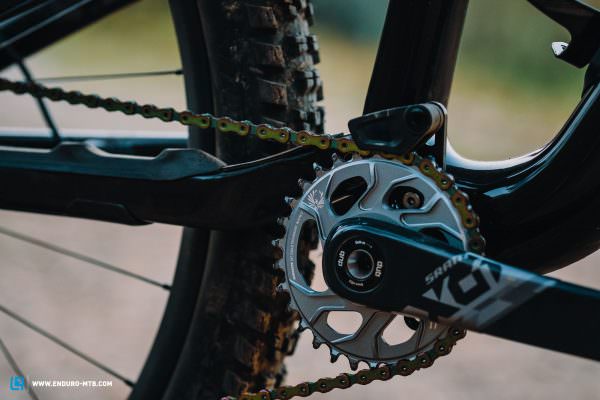
The 30 tooth chainring underlines the bike’s all-round character. Like this, the Stumpy is perfectly equipped for all-day epics.

Thanks to the specially designed chainstay protector, the Stumpjumper is super quiet going downhill – that’s how it should be!

Specialized have covered up the gap where rocks and dirt used to get caught
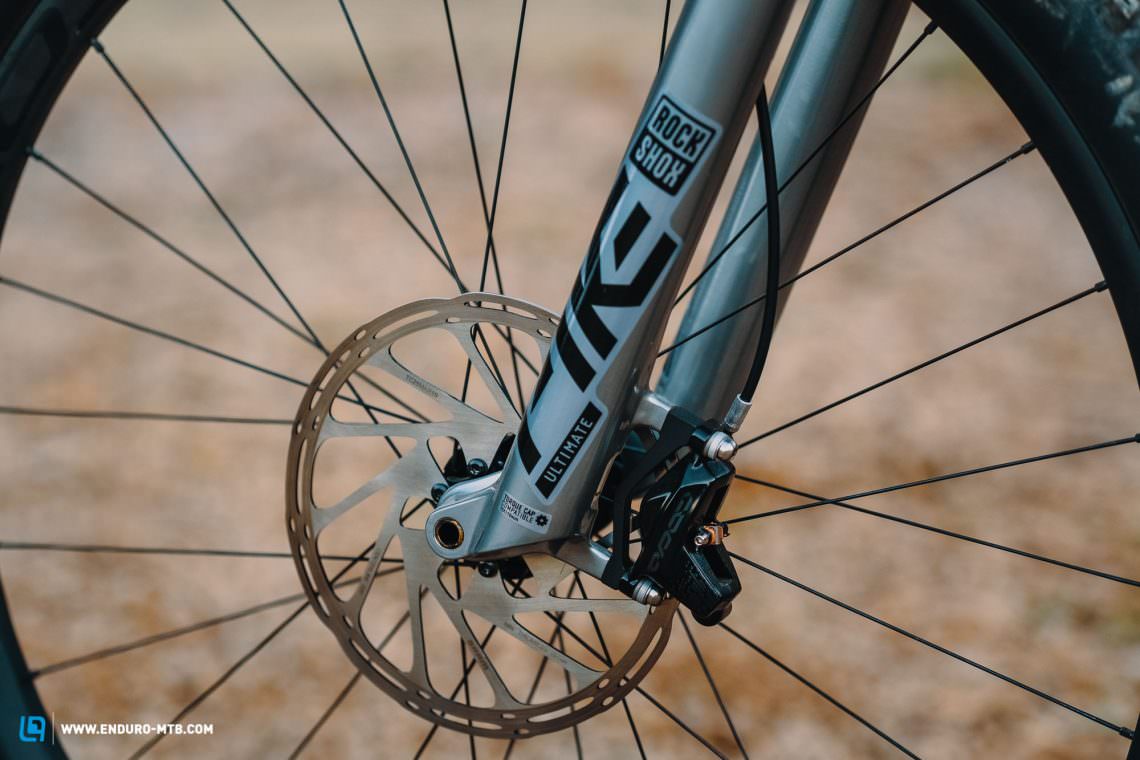
The SRAM CODE RSC brakes combined with the 200 mm rotors front and rear provide maximum stopping power while still being easy to modulate
Geometry of the Specialized S-Works Stumpjumper
Long reach and slack head angle – these are the two indicators of modern geometry. While some brands battle it out with increasingly radical values, Specialized have kept the Stumpjumper conservative. The 445 mm reach on the size L is short and the 66.5° head angle is steep. The seat tube angle is also rather slack at 74.1°. Only the short 455 mm seat tube and the low bottom bracket are evidence of the fact that the frame hasn’t been on the market that long.
An absolute classic – the Specialized Stumpjumper lives up to its reputation, but it’s starting to show signs of ageing!
| Size | S | M | L | XL |
|---|---|---|---|---|
| Seat tube | 380 mm | 410 mm | 455 mm | 505 mm |
| Top tube | 572 mm | 595 mm | 628 mm | 662 mm |
| Head tube | 95 mm | 95 mm | 125 mm | 140 mm |
| Head angle | 66.5° | 66.5° | 66.5° | 66.5° |
| Seat angle | 74,8° | 74,8° | 74,8° | 74,8° |
| Chainstays | 437 mm | 437 mm | 437 mm | 437 mm |
| BB height | 342 mm | 342 mm | 342 mm | 342 mm |
| Wheelbase | 1149 mm | 1169 mm | 1201 mm | 1232 mm |
| Reach | 405 mm | 425 mm | 445 mm | 470 mm |
| Stack | 614 mm | 614 mm | 641 mm | 656 mm |
The S-Works Stumpjumper on test
Before doing anything else with the Stumpjumper we recommend sliding the saddle all the way forward as otherwise, the slack seat tube angle puts your weight too far towards the back. Once you’ve adjusted the saddle, the riding position is very comfortable and perfectly suitable for long outings. The rear suspension underlines this, being tuned more for comfort than maximum efficiency. This means that the bike does suffer from pedal bob, but it also provides a lot of traction and sensitively absorbs all bumps. Thanks to the light wheels, the bike climbs easily.
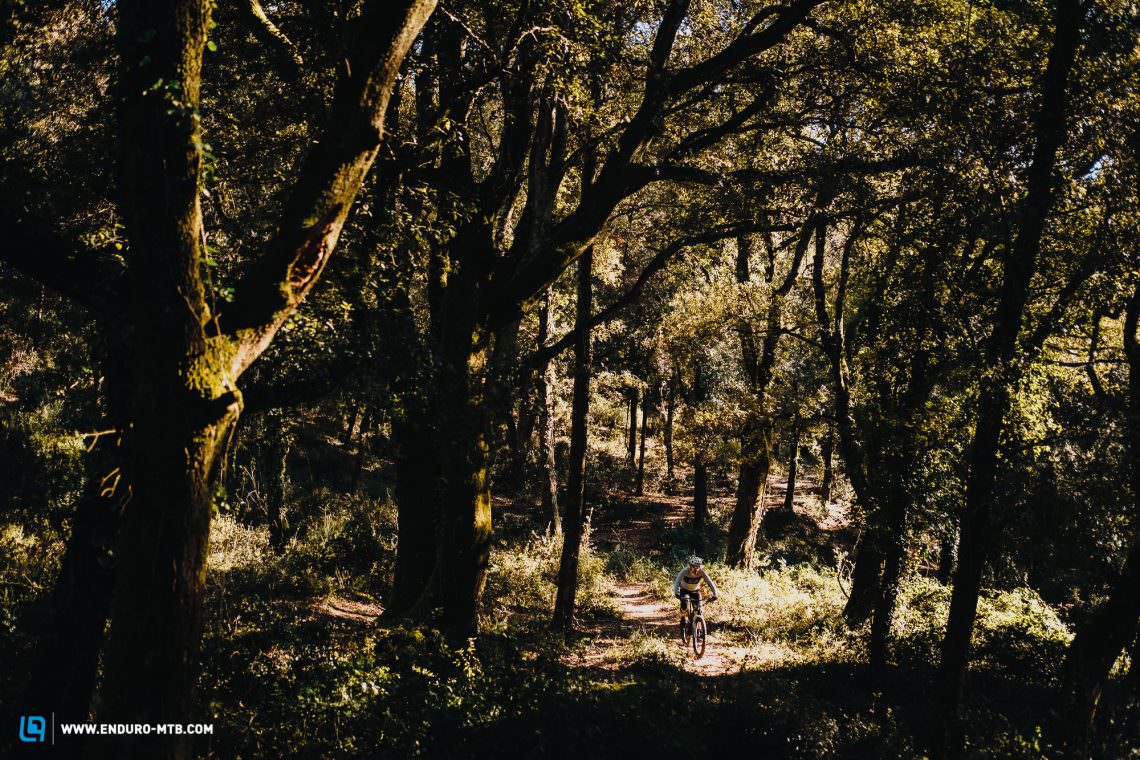

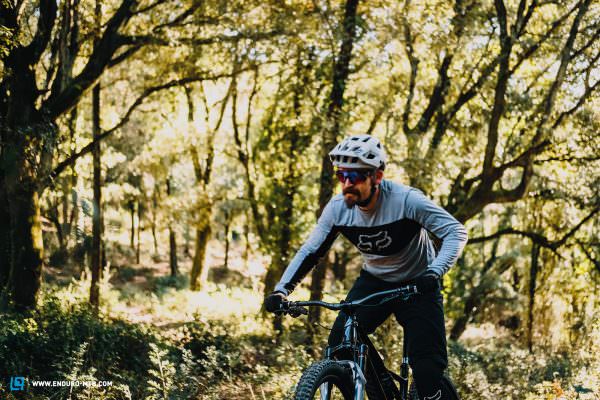
Super comfortable! Both the rear suspension and the geometry of the Stumpjumper are designed with comfort in mind.
Going downhill, you’ll immediately feel comfortable aboard the Stumpjumper. Due to the compact geometry and the low bottom bracket, it is very easy to generate an even amount of grip with both wheels, making easy work of quick direction changes. The suspension performs as sensitively on the descents as it does on the climbs. It provides a lot of traction, but active riders will want more support at the rear. When pumping the bike and on hard landings, it uses up its 140 mm travel too readily. To compensate for this, it helps to increase the low-speed compression of the rear suspension slightly. In steep terrain, the bike’s ample standover clearance and tall front end instil you with confidence, though the Stumpjumper lacks composure at high speeds.



Tuning tips: push the saddle forwards | remove the spacers under the stem
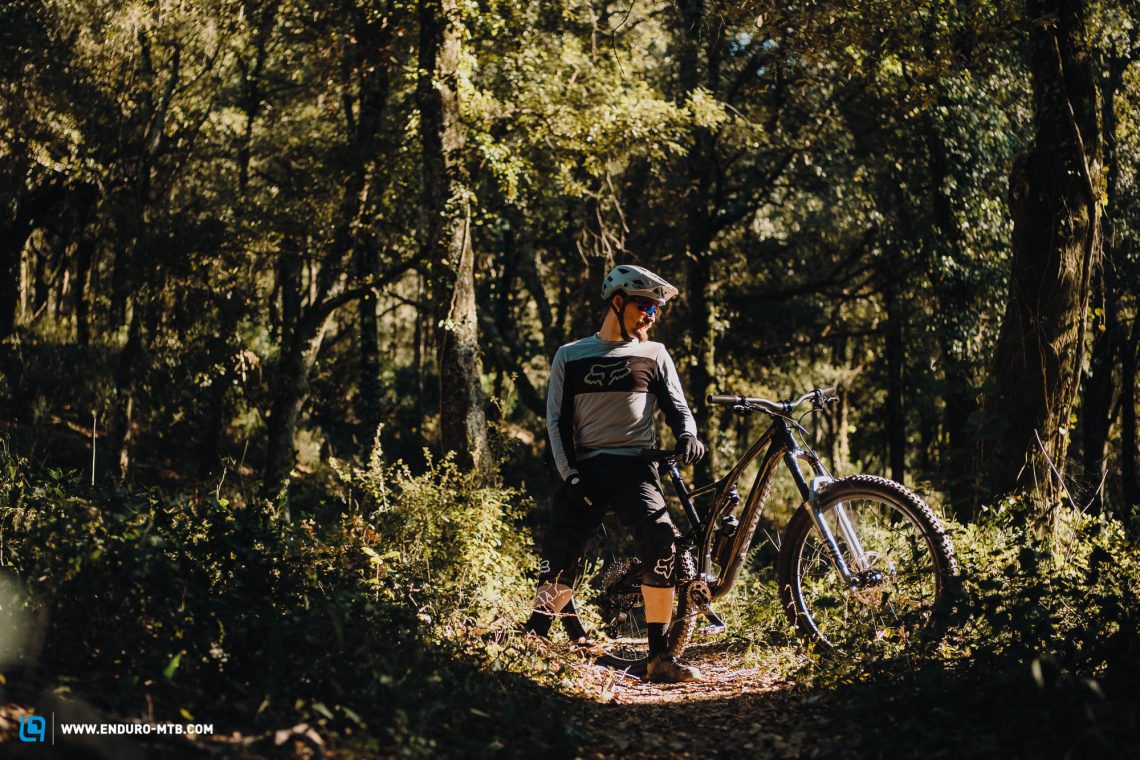
How does the Specialized Stumpjumper compare to the competition?
Despite similar numbers, the Specialized Stumpjumper and the SCOTT Genius couldn’t be more different. While the SCOTT focuses on efficiency, the Specialized is all about comfort and confidence. The Genius is livelier and more direct as you accelerate, while the Stumpy conserves your energy on long rides and instils you with confidence in demanding terrain. Unfortunately, neither can keep up with the Ibis Ripmo. The latter offers a better pedalling position on the climbs and covers ground efficiently, as well as offering a lot more reserves on the descents while remaining highly agile.
Conclusion of the Specialized S-Works Stumpjumper SRAM AXS
The Specialized S-Works Stumpjumper is still one of the most fun and versatile bikes on the market. It impressed us with its intuitive, stable and easy handling and is very comfortable to ride. However, active riders will want more mid-stroke support and composure. The SWAT system is still brilliant, but the hefty price of the whole package is a flop!
Tops
- intuitive handling
- very comfortable
- SWAT system
Flops
- price
- inefficient suspension on the climbs
- slightly nervous at higher speeds
For more information head to specialized.com
The test field
Click here for an overview of the best trail bike in test.
All bikes in review: Cannondale Habit Carbon 1 (Click for review) | Canyon Spectral CFR 9.0 SL (Click for review) | Giant Trance Advanced Pro 29 (Click for review) | Ibis Ripmo AXS (Click for review) | Nukeproof Reactor 290 (Click for review) | Norco Optic C1 (Click for review) | Orbea Occam M-LTD (Click for review) | Radon Slide Trail 10 (Click for review) | Santa Cruz Hightower CC X01 Reserve (Click for review) | Scott Genius 900 Tuned AXS (Click for review) | Specialized Levo SL Expert Carbon (Click for review) | Trek Fuel EX 9.9 X01 AXS Project ONE (Click for review) | Yeti SB130 TLR (Click for review) | YT JEFFSY CF PRO (Click for review)
Did you enjoy this article? If so, we would be stoked if you decide to support us with a monthly contribution. By becoming a supporter of ENDURO, you will help secure a sustainable future for high-quality mountain bike journalism. Click here to learn more.
Words: Photos: Christoph Bayer, Finlay Anderson, Markus Frühmann, Jonas Müssig









